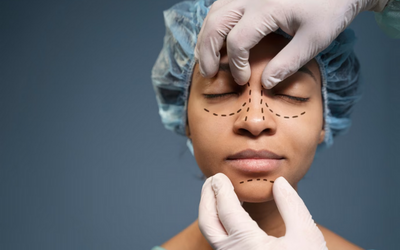Plastic Surgery
Plastic Surgery

Plastic Surgery
Plastic surgery is a medical specialty that deals with the correction or restoration of form and function. This field has been around for decades, but has gained more popularity in recent years due to the advancements in technology and increased demand for cosmetic procedures.
Plastic Surgery: Understanding the Procedure and its Benefits
In this article, we will explore the basics of plastic surgery, including the different types of procedures, benefits, and potential risks. Our goal is to provide you with a comprehensive understanding of the topic so that you can make an informed decision should you consider plastic surgery.
What is Plastic Surgery?
Plastic surgery is a surgical specialty that involves the reconstruction, restoration, or alteration of the human body. This can include cosmetic procedures that improve the appearance of a person’s body, as well as reconstructive procedures that restore function to an area that has been damaged due to injury, disease, or congenital defects.
Types of Plastic Surgery Procedures
There are many different types of plastic surgery procedures, including cosmetic and reconstructive procedures. Some of the most popular cosmetic procedures include:
- Breast augmentation
- Liposuction
- Tummy tuck
- Rhinoplasty (nose job)
- Facelift
Reconstructive procedures can be performed on almost any part of the body and can include procedures such as:
- Burn reconstruction
- Hand surgery
- Scar revision
- Cleft lip and palate repair
Benefits of Plastic Surgery
Plastic surgery can provide many benefits, both physical and psychological. Some of the most common benefits include:
- Improved appearance: Plastic surgery can help improve the appearance of a person’s body, making them feel more confident and attractive.
- Increased self-esteem: By improving the appearance of a particular body part, many people experience an increase in self-esteem and confidence.
- Improved physical function: Some plastic surgery procedures can improve the function of a particular body part, making it easier for a person to perform daily activities.
- Relief from physical discomfort: Some procedures, such as a tummy tuck or liposuction, can relieve discomfort caused by excess skin or fat.
Risks and Complications of Plastic Surgery
Like all surgical procedures, plastic surgery comes with certain risks and potential complications. Some of the most common risks and complications include:
- Infection
- Bleeding
- Scarring
- Anesthesia risks
- Poor wound healing
It is important to thoroughly discuss the potential risks and complications of a plastic surgery procedure with your doctor before undergoing the procedure. Your doctor will also provide you with instructions on how to minimize the risks and minimize the chances of complications.
Choosing the Right Plastic Surgeon
When choosing a plastic surgeon, it is important to select someone who is experienced and qualified. Look for a plastic surgeon who is certified by the American Board of Plastic Surgery and has experience performing the type of procedure you are interested in.
It is also important to choose a plastic surgeon who you feel comfortable with and who you can trust. You should feel confident in asking questions and discussing your concerns with your surgeon.
The Plastic Surgery Process
The plastic surgery process varies depending on the type of procedure you are undergoing. However, there are some general steps involved in most plastic surgery procedures, including:
- Initial consultation: During the initial consultation, your surgeon will discuss your goals and expectations, perform a physical exam, and provide you with information on the procedure.
- Pre-operative preparation: Before the procedure, you will need to undergo a series of tests and complete any necessary pre-operative preparation.
- Surgery: The surgery itself will vary
